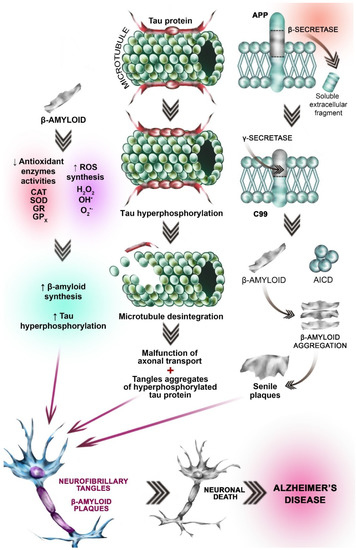Abstract
The etiopathogenesis of Alzheimer’s disease has not been fully explained. Now, the disease is widely attributed both to genetic and environmental factors. It is believed that only a small percentage of new AD cases result solely from genetic mutations, with most cases attributed to environmental factors or to the interaction of environmental factors with preexistent genetic determinants. Fluoride is widespread in the environment and it easily crosses the blood–brain barrier. In the brain fluoride affects cellular energy metabolism, synthesis of inflammatory factors, neurotransmitter metabolism, microglial activation, and the expression of proteins involved in neuronal maturation. Finally, and of specific importance to its role in Alzheimer’s disease, studies report fluoride-induced apoptosis and inflammation within the central nervous system. This review attempts to elucidate the potential relationship between the effects of fluoride exposure and the pathogenesis of Alzheimer’s disease. We describe the impact of fluoride-induced oxidative stress and inflammation in the pathogenesis of AD and demonstrate a role for apoptosis in disease progression, as well as a mechanism for its initiation by fluoride. The influence of fluoride on processes of AD initiation and progression is complex and warrants further investigation, especially considering growing environmental fluoride pollution.


